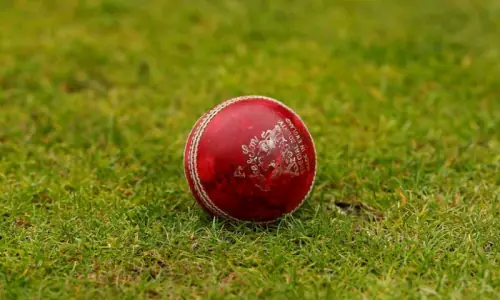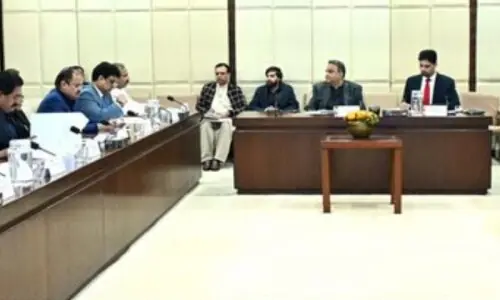“Amuseum should not be a dead and boring place,” says Dr Abdusamad, the youngest director of the Archaeology and Museum Department in Khyber Pakhtunkhwa, who has big plans for the historic Peshawar Museum to make it a model in the province.
There are 12 such more museums which have rich and unique collection of Gandhara artefacts, but hardly any tourist visits them. Lack of awareness among the local people is what had been more damaging to these archaeological sites and museums than harsh weather and volatile times.
The young archaeologist who has been given the responsibility just recently feels there is need to focus on promotion of awareness about cultural heritage of the region having hundreds of archaeological sites, monuments of Gandhara period and even remains dating back to stone age.
The focus of the director is to create interest of domestic tourists and local people in the Peshawar Museum which has some unique collection of Buddhist period.
Dr Samad thinks that by making little changes and additions the Peshawar Museum could be brought at par with any other museum of good standard in the world.
The directorate is planning to bring the main hall of the museum, originally a ballroom dating back to 1906-7 made in the memory of Queen Victoria, to its original shape. There is a space left between the wooden floor and the base of the building so that exhaust could help fight humidity to help save the structure from damage.
“Exhaust fans would be installed at these holes to protect the floor,” said Dr Samad.
The lighting, thrown at the objects according to international standards, could really make a difference at highlighting the important features of the artefacts. So far 13 directors have worked at the museum, but none had been able to appropriately fix the lighting issue at the museum.
The two-storey building, an amalgamation of the British and Mughal architectures, originally consisted of a main hall and two side aisles on the ground and first floor, surmounted by four elegant cupolas and small pinnacles on all the corners. On the eastern and western side of the building, two halls were added in similar fashion in 1969-70 (one on each side). In 1974-75, the second storey was added to these side halls.
According to the Khyber Pakhtunkhwa Directorate of Archaeology and Museums, a new block under the project “extension of Peshawar Museum” was approved in 2002 at a cost of Rs33 million. It has two components; extension of the museum for constructing an Islamic block with two galleries, a conservation laboratory, two halls for the reserve collection, offices of the provincial directorate and a cafeteria. The second component was to complete remodeling of the existing building by replacing the showcases, lighting, labeling, and display of all the galleries of the existing main building.
The new director is going to attempt to make the Peshawar Museum look attractive to the visitors by restoring its look marred by one director in recent years who had no colour sense and painted the building borders orange.
“The building is again being painted brick-red which was its original colour,” said Dr Samad.
There is now a virtual view of the museum also available for the visitors looking for detailed information about each artefact on display.
A souvenir shop has also been opened up. The T-shirts, replicas of Buddha statues and other items that could be of interest to visitors were lying in store for sometime as no one bothered to open this shop for years that could help in promotion of the Peshawar Museum.
There have been very few visitors in recent years though the Peshawar Museum houses some of the finest Gandharan sculptures excavated from the major Gandhara sites of Shah-Ji-Ki-Dheri, Peshawar, Sahri Bahlol, World Heritage Site of Takhtbai in Mardan and Jamal Garhi and other Gandharan sites excavated by British scholars.
The collection of 14,156 items include mostly Gandharan sculptures, coins, manuscripts and copies of the Holy Quran, inscriptions, weapons, Mughal era and later period paintings, local and Persian handicrafts and many other items. Looking at the thin number of visitors, the director has come up with a strategy to create as much awareness as possible about the museum. Awareness campaign has been planned to involve schools which have been asked to include visits to the Peshawar Museum and others for school children in their yearly activities.
Peshawar, one of the oldest living cities in South Asia, has all the features to attract tourists having interest in history and archaeology.
“If even local people are made aware of their heritage it would help protect the sites and monuments. Once they realise that it is their own cultural heritage, they would take care of it,” says Dr Samad.
Published in Dawn, August 31, 2014


































